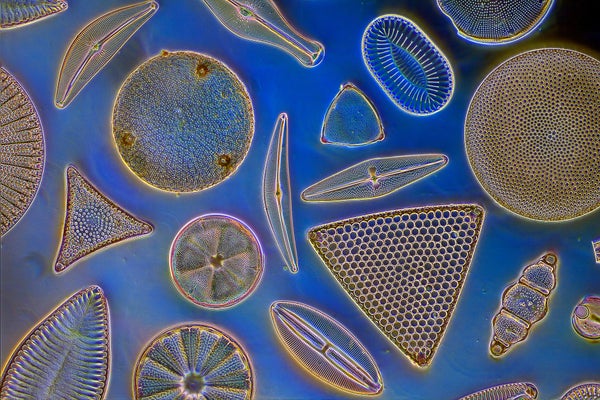Ocean temperatures have been off the charts this year, breaking heat records for the fourth year in a row. This summer, waters from Florida to Europe have baked in extreme marine heat waves of unprecedented intensity. As these become both more frequent and more potent, they will worsen destructive weather events such as hurricanes and put many marine species under tremendous stress, threatening the oceanic food web that ultimately supports billions of people.
This catastrophe-in-the-making is yet another reminder that climate disruption is harming Earth’s oceans at an alarming, increasing rate. As we release more carbon dioxide emissions into the atmosphere, nearly all the additional heat energy that gets trapped in our biosphere is absorbed by our oceans, with devastating consequences.
Climate experts agree that addressing climate change will require not just urgent and deep emissions cuts, but also cleanup of the massive amounts of excess CO2 pollution in the atmosphere using carbon dioxide removal (CDR). As leaders at two organizations that work to accelerate climate solutions—XPRIZE and Ocean Visions—we know that removing and safely storing billions of tons of CO2 will require prodigious deployment of new technologies and supporting infrastructure; it will undoubtedly be the largest pollution cleanup in history. And we have barely started.
On supporting science journalism
If you're enjoying this article, consider supporting our award-winning journalism by subscribing. By purchasing a subscription you are helping to ensure the future of impactful stories about the discoveries and ideas shaping our world today.
Approaches such as planting a trillion trees or building huge fans and filters can help pull CO2 directly out of the sky. But it turns out that the oceans themselves could actually be a key climate solution, thanks to their amazing carbon-absorbing abilities.
The burgeoning field of ocean-based CDR can take many forms. Some enhance the carbon-sequestering potential of existing biological systems, whereas others rely on new technologies and methods that await large-scale testing. Biological solutions include restoring marine ecosystems such as tidal salt marshes, mangrove forests and seagrass meadows that can draw down carbon dioxide through photosynthesis and thus trap it as organic carbon in their roots and in marine sediment. Managed properly, this carbon can remain “fixed” in the seabed for thousands of years. Macroalgae (aka seaweed) has the potential to sequester vast quantities of carbon dioxide, by sinking it (algae grows by consuming CO2) into the deep ocean. And adding nutrients such as nitrogen, phosphorus or iron to nutrient-limited areas of the ocean to help microalgae grow could increase ocean uptake of carbon dioxide from the atmosphere.
Other potential ocean-based carbon removal methods are more novel, such as using electricity to power machines on floating platforms that rearrange seawater molecules to extract carbon dioxide directly from the ocean, or using naturally occurring minerals that allow the ocean to store more carbon without increasing its acidity. This last approach could not only boost the ocean’s carbon-carrying capacity, but may help counter the acidification that is contributing to the destruction of coral reefs and other marine species.
Many of these solutions have already proven successful in labs and are beginning field trials in the open ocean. However, public response to these proposals has been mixed—and for good reason. The ocean is an open system, and large-scale interventions carry risks, some of which may include biodiversity loss, uncontrollable algae blooms, or acidification in the deep sea. It is therefore critical that we not only focus on scientifically sound deployment, but also implement robust safeguards to ensure that risks are managed.
While there has been some progress, more can and must be done to ensure robust safeguards are in place to protect our oceans, without compromising the urgent need for climate action.
First, we need to double down on investments in sophisticated monitoring and verification tools for projects that can accurately and transparently track their progress. We should accurately measure and account for carbon benefits—including the rate of sequestration of carbon emissions associated with a project, as well as the long-term durability of the sequestered CO2. Ongoing monitoring for ecological impacts must also be conducted with full transparency to ensure projects are being properly managed over time. Second, the international community must develop thoughtful policies and governance frameworks, including regulatory and permitting guidance, for how and where ocean-based CDR projects can be deployed. Finally, public agencies must include local people in policy discussions, requiring that projects bring communities into siting and planning discussions and even into leadership posts. There needs to be transparency about potential risks, and commitments to bringing benefits directly to communities.
The good news is that a growing body of organizations and policy makers recognize the crucial importance of safe and responsible testing of ocean CDR. In the U.S., the Biden administration has made investments in carbon removal a core component of its climate change strategy. The White House has incorporated ocean-based CDR into its Ocean Climate Action Plan, with a $30 million grant program already rolling out through the National Oceanic and Atmospheric Administration. XPRIZE Carbon Removal, a $100 million, four-year global incentive prize competition, has 225 registered teams working on developing ocean-based solutions that focus on responsible testing, alongside measurement, reporting and verification of the carbon removal. And Ocean Visions is running an innovation accelerator to support ocean-based CDR startups with specific scientific, technical and policy expertise.
The health of our oceans is central to the well-being of our species and our entire planet. Climate disruption puts all of this in peril. While ocean-based CDR is still an emerging field that requires more study, discussion and exploration of potential risks, the urgency of the climate crisis demands that we thoroughly pursue every possible means of addressing it. With robust investment in research and testing, there’s hope that we can scale up the solutions we need to restore both the ocean and our climate.
This is an opinion and analysis article, and the views expressed by the author or authors are not necessarily those of Scientific American.
